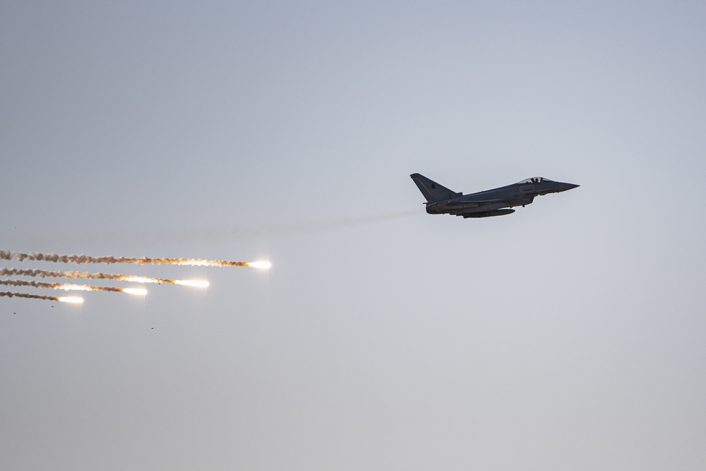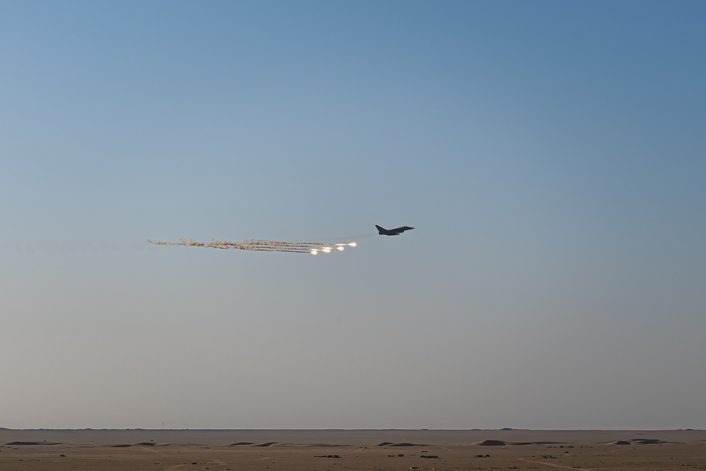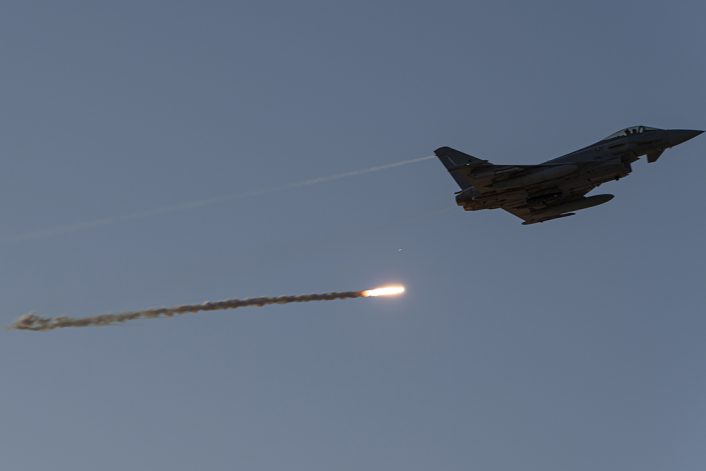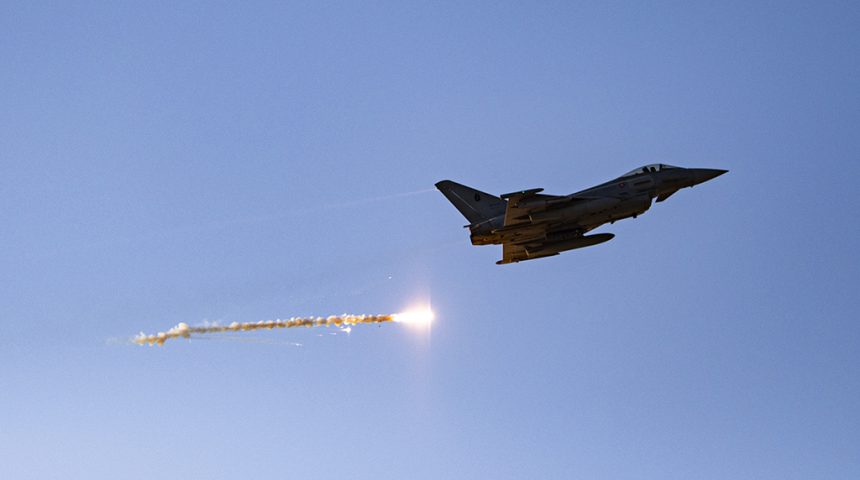Images of Eurofighter Typhoons popping flares are pretty rare. Here are some cool ones taken during joint training between Italian Air Force and U.S. Air Force, Army, Navy and Marine Corps personnel in Kuwait.
Four Italian Air Force Eurofighter Typhoon jets are currently stationed in Kuwait, to support OIR (Operation Inherent Resolve), the multinational campaign against Daesh in Iraq and Syria. The F-2000A jets have deployed in April 2021, as part of “Prima Parthica”, as the Italian Armed Forces operation is dubbed at national level, and operate within the Task Group “Typhoon”.
Since they arrived at Alì Al Salem Air Base, west of Kuwait City, the Italian jets have logged more than 3,000 FH (Flight Hours) carrying out reconnaissance missions on more than 10,000 points of interest, using the Rafael Reccelite reconnaissance pod. Integrated on the Typhoon fleet since 2015, the Reccelite is the Italian Air Force’s tactical pod of choice to carry out ISR missions: it is a Day/Night electro-optical pod able to provide real-time imagery collection. It is made of a stabilized turret, solid-state on board recorder that provides image collections in all directions, from high, medium and low altitudes. The Reccelite reconnaissance pod is used to broadcast live video imagery via datalink to ground stations and to ROVER (Remote Operations Video Enhanced Receiver) tactical receivers in a range of about 100 miles.
Along with the OIR missions, the Italian Typhoons regularly conduct missions over the local ranges in coordination with U.S. JTACs (Joint Terminal Attack Controllers).
Some details about such missions were released by the U.S. DoD. In particular, on May 26, the Typhoons were involved in a live-fire close air support training
conducted with members assigned to the U.S. Air Force 82nd Expeditionary Air Support Operations Squadron; Army 1st Battalion, 194th Armor Regiment; Navy UNIT; Marine Special Purpose Marine Air-Ground Task Force with the 2nd Battalion, 1st Marines; at Udairi Range Complex, Kuwait.

During the tactical activity at the range, artillery Soldiers, along with JTACs and forward air controllers with the U.S. Armed Forces, coordinated a series of tasks that incorporated close air support provided by Italian Eurofighter Typhoon pilots.
“For the [Italian Eurofighter Typhoons], this is a great opportunity to be controlled by U.S. ground controllers,” said U.S. Marine Corps Staff Sgt. Peter Martinez, 3rd Angelico Special Purpose Marine Air-Ground Task Force JTAC in a public release. “This experienced allowed us all exposure to different tempos and language barriers.”
While Soldiers and Marines with the weapons company in the 2nd Battalion and 1st Marines, respectively, fired mortars to orient the pilot’s eyes or suppress enemy fire, JTACs and FACs coordinated with the Typhoon pilots and the weapons company, in what was the first time the U.S. personnel cooperated with the Eurofighter.

“It’s the first-time training with [Eurofighter Typhoons] and this gave us a better understanding of their capabilities,” Hansen said. “It also allowed us to broaden our horizons and become a little bit more familiar with how the Army and Marines do what they do, and why they do what they do with the tools they have.”
While over the range, the Eurofighters popped flares: while normal in a real operational environment, it’s not that usual to see a Typhoon (even more so, an Italian F-2000) using flares, i.e. high-temperature heat sources used to mislead surface-to-air or air-to-air missile’s heat-seeking targeting systems, creating the pyrotechnic visual effect similar to a fireworks display. Such countermeasures are used against MANPADS (Man Portable Air Defense Systems) and IR-guided surface-to-air missiles.










